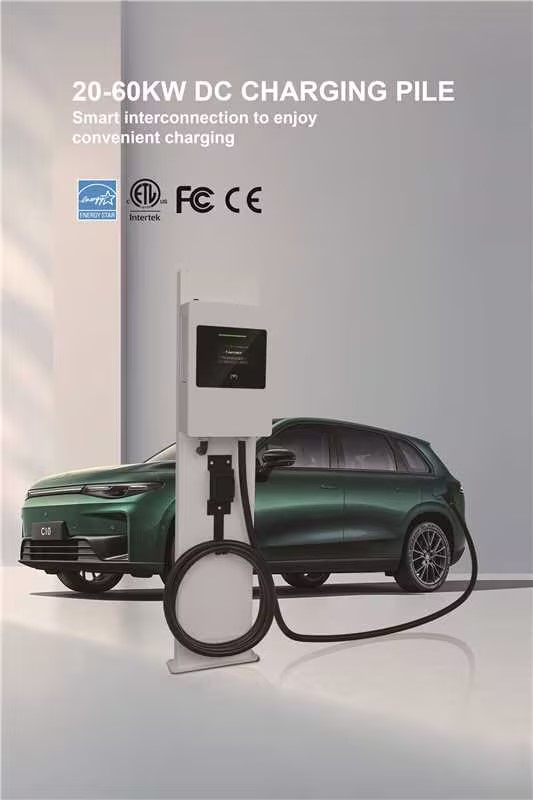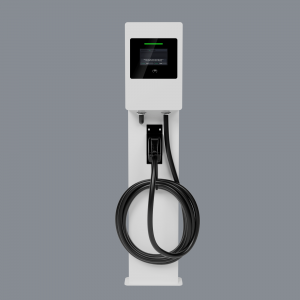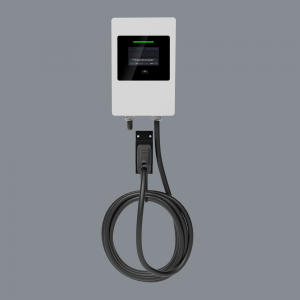What is Level 3 Charging?
Level 3 charging, also known as DC fast charging, is the fastest method for charging electric vehicles (EVs). These stations can deliver power ranging from 50 kW to 400 kW, allowing most EVs to charge significantly in under an hour, often in as little as 20-30 minutes. This rapid charging capability makes Level 3 stations particularly valuable for long-distance travel, as they can recharge a vehicle’s battery to a usable level in the same time it takes to fill a conventional gas tank . However, these chargers require specialized equipment and higher electrical infrastructure.
Benefits of Level 3 charging stations
Level 3 charging stations, also known as DC fast chargers, offer several key advantages for electric vehicle (EV) users:
Rapid Charging Speed:
Level 3 chargers can significantly reduce charging time, typically adding 100-250 miles of range in just 30 to 60 minutes. This is much faster compared to Level 1 and Level 2 chargers.
Efficiency:
These stations utilize high voltage (often 480V), allowing for efficient charging of EV batteries. This efficiency can be crucial for users needing quick turnarounds, especially in commercial or fleet applications.
Convenience for Long Trips:
Level 3 chargers are particularly beneficial for long-distance travel, enabling drivers to recharge quickly at strategic locations along highways and major routes, minimizing downtime.
Compatibility with Modern EVs:
These chargers often come with specially designed connectors that ensure compatibility and safety with various electric vehicle models.
Overall, Level 3 charging stations play a crucial role in enhancing the EV charging infrastructure, making electric vehicle use more practical and convenient.
Combined cost of 3-level charging stations
1. Upfront Cost of Level 3 Charging Infrastructure
The upfront cost of Level 3 charging infrastructure primarily includes the purchase of the charging station itself, site preparation, installation, and any necessary permits or fees. Level 3 charging stations, also known as DC fast chargers, are significantly more expensive than their Level 1 and Level 2 counterparts due to their advanced technology and faster charging capabilities.
Typically, the cost of a Level 3 charging station can range from $30,000 to over $175,000 per unit, depending on various factors such as the charger’s specifications, manufacturer, and added features like networking capabilities or payment systems . This price tag reflects not just the charger itself but also the necessary components to ensure efficient operation, such as transformers and safety equipment.
Furthermore, the upfront investment may include costs associated with site preparation. This may involve electrical upgrades to accommodate the high power demands of Level 3 chargers, which typically require a 480V power supply. If existing electrical infrastructure is inadequate, significant costs may arise from upgrading service panels or transformers.
2. Average Cost Range of Level 3 Charging Stations
The average cost of Level 3 charging stations tends to fluctuate based on several factors including location, local regulations, and the specific charging technology employed. On average, you can expect to spend between $50,000 and $150,000 for a single Level 3 charging unit.
This range is broad because various factors can influence the final price. For instance, locations in urban areas might have higher installation costs due to space constraints and increased labor rates. Conversely, installations in suburban or rural areas may have lower costs but could also face challenges such as longer distances to electrical infrastructure.
Additionally, costs can vary based on the type of Level 3 charger. Some may offer higher charging speeds or greater energy efficiencies, leading to higher initial costs but potentially lower operational costs over time. It’s also essential to consider the ongoing operational costs, including electricity rates and maintenance, which can impact the overall financial feasibility of investing in Level 3 charging stations.
3. Breakdown of Installation Costs
Installation costs for Level 3 charging stations can comprise several components, and understanding each can help stakeholders plan their investments more effectively.
Electrical Upgrades: Depending on the existing infrastructure, electrical upgrades can represent a significant portion of installation costs. Upgrading to a 480V supply, including necessary transformers and distribution panels, can range from $10,000 to $50,000, depending on the complexity of the installation.
Site Preparation: This includes site surveys, excavation, and laying down the necessary groundwork for the charging station. These costs can vary widely, often falling between $5,000 and $20,000, depending on the site conditions and local regulations.
Labor Costs: The labor required for installation is another crucial cost factor. Labor rates can vary based on location but typically account for 20-30% of the total installation cost. In urban areas, labor costs may increase due to union regulations and demand for skilled workers.
Permits and Fees: Obtaining necessary permits can add to costs, especially in areas with stringent zoning laws or building codes. These costs can range from $1,000 to $5,000, depending on the local municipality and the specifics of the project.
Networking and Software: Many Level 3 chargers come with advanced networking capabilities that allow for remote monitoring, payment processing, and usage analytics. The costs associated with these features can range from $2,000 to $10,000, depending on the service provider and features chosen.
Maintenance Costs: While not part of the initial installation, ongoing maintenance costs should be factored into any comprehensive cost analysis. These costs can vary based on usage and local conditions but often average around 5-10% of the initial investment annually.
In summary, the total cost of acquiring and installing a Level 3 charging station can be substantial, with initial investments ranging from $30,000 to $175,000 or more. Understanding the breakdown of these costs is crucial for businesses and municipalities considering the deployment of EV charging infrastructure.
Recurrent costs & economic life
When analyzing the economic life of assets, particularly in the context of charging stations or similar equipment, two critical components emerge: energy consumption rates and maintenance and repair costs.
1. Energy Consumption Rate
The energy consumption rate significantly impacts the operational costs over the asset’s economic life. For charging stations, this rate is usually expressed in kilowatt-hours (kWh) consumed per charge. Level 3 charging stations, for instance, often operate at higher energy levels, leading to increased electricity bills. Depending on local electricity rates, the cost to charge an electric vehicle (EV) can vary, influencing the overall operating cost of the station.
To calculate energy costs, one must consider:
Usage Patterns: More frequent usage leads to higher energy consumption.
Efficiency: The efficiency of the charging system affects the amount of energy consumed per vehicle charged.
Tariff Structures: Some regions offer lower rates during off-peak hours, which can mitigate costs.
Understanding these factors allows operators to estimate recurring energy expenses and inform decisions about infrastructure investments and potential pricing strategies for users.
2. Maintenance and Repair
Maintenance and repair costs are pivotal in determining an asset’s economic life. Over time, all equipment experiences wear and tear, necessitating regular maintenance to ensure optimal performance. For charging stations, this can involve:
Routine Inspections: Regular checks to ensure that the station operates correctly and meets safety standards.
Repairs: Addressing any technical issues that arise, which can range from software updates to hardware replacements.
Component Lifespan: Understanding the expected lifespan of components helps in budgeting for replacements.
A proactive maintenance strategy can significantly reduce long-term costs. Operators can employ predictive maintenance technologies to anticipate failures before they occur, minimizing downtime and repair costs.
Overall, energy consumption rates and maintenance expenses are integral to understanding the recurring costs associated with the economic life of charging stations. Balancing these factors is essential for maximizing return on investment and ensuring the sustainability of operations in the long run.
Comparison of Charging Levels: Level 1, Level 2, and Level 3
1. Charging Speed and Efficiency Comparison
The three main levels of electric vehicle (EV) charging—Level 1, Level 2, and Level 3—vary significantly in terms of charging speed and efficiency, catering to different user needs and situations.
Level 1 Charging
Level 1 chargers use a standard 120-volt outlet and are typically found in residential settings. They provide a charging speed of about 2 to 5 miles of range per hour of charging. This means that fully charging an electric vehicle can take anywhere from 20 to 50 hours, making it impractical for long-distance travel. Level 1 charging is ideal for overnight charging at home, where the vehicle can be plugged in for an extended period.
Level 2 Charging
Level 2 chargers operate at 240 volts and can be installed both at home and in public locations. These chargers significantly increase charging speed, offering approximately 10 to 60 miles of range per hour. The time to fully charge an EV using Level 2 charging typically ranges from 4 to 10 hours, depending on the vehicle and charger output. Level 2 charging stations are common in public areas, workplaces, and homes, providing a good balance of speed and convenience.
Level 3 Charging
Level 3 chargers, often referred to as DC Fast Chargers, are designed for rapid charging and use direct current (DC) instead of alternating current (AC). They can deliver charging speeds of 60 to 350 kW, allowing for an impressive 100 to 200 miles of range in about 30 minutes. This makes Level 3 charging ideal for long trips and urban areas where quick turnaround is essential. However, the availability of Level 3 chargers is still limited compared to Level 1 and Level 2 chargers.
Efficiency Considerations
Efficiency in charging also varies by level. Level 3 chargers are generally the most efficient, minimizing energy loss during the charging process, but they also require substantial infrastructure investment. Level 1 chargers, while less efficient in speed, have minimal installation costs, making them accessible for many households. Level 2 chargers offer a middle ground, providing reasonable efficiency for both home and public use.
2. Analyze the Charging Cost of Different Charging Levels
Charging costs depend on several factors, including electricity rates, charger efficiency, and usage patterns. Analyzing the costs associated with each charging level provides insight into their economic viability.
Level 1 Charging Costs
The cost of Level 1 charging is relatively low, primarily because it uses a standard household outlet. Assuming an average electricity cost of $0.13 per kWh and a typical EV battery size of 60 kWh, a full charge would cost approximately $7.80. However, the extended charging time can lead to higher costs if the vehicle is left plugged in for longer than necessary. Additionally, since Level 1 charging is slower, it may not be feasible for users who require more frequent vehicle use.
Level 2 Charging Costs
Level 2 charging, while more expensive upfront due to the installation of dedicated equipment, offers better efficiency and faster charging times. The cost of a full charge at Level 2 would still be around $7.80, but the reduced charging time allows for more flexibility. For businesses and public charging stations, pricing models can vary; some may charge per hour or per kWh consumed. Level 2 chargers also tend to be eligible for incentives or rebates, offsetting installation costs.
Level 3 Charging Costs
Level 3 charging stations have the highest installation and operational costs, typically ranging from $30,000 to $100,000 or more, depending on the power output and infrastructure requirements. However, the cost per charge can vary widely based on the charging network and regional electricity rates. On average, a DC Fast Charge can cost between $10 to $30 for a complete charge. Some stations charge by the minute, making the overall cost depend on the charging time.
Total Cost of Ownership
When considering the total cost of ownership (TCO), which includes installation, energy, maintenance, and usage patterns, Level 3 chargers may offer the best ROI for businesses aiming to attract customers quickly. Level 2 chargers are advantageous for mixed-use facilities, while Level 1 remains economical for residential settings.
Investing in Level 3 Charging Stations is a Sustainable Economic Benefit
Investing in Level 3 charging stations offers numerous sustainable economic benefits that align with growing trends in electric vehicle (EV) adoption. Key advantages include:
Boosting Local Economies: Level 3 chargers attract EV users, leading to increased foot traffic for nearby businesses. Studies show a positive correlation between charging stations and the economic performance of local businesses.
Job Creation: The development and maintenance of charging infrastructure generate employment opportunities, supporting local workforce development initiatives.
Health and Environmental Benefits: Reduced vehicle emissions contribute to improved air quality, leading to lower healthcare costs and a healthier community overall.
Government Incentives: Investments in EV infrastructure are often supported by tax incentives, making it financially viable for businesses to adopt this technology.
By enhancing local economies, creating jobs, and supporting health initiatives, Level 3 charging stations represent a strategic investment for a sustainable future.
Your Trusted Level 3 Charging Station Partner
In the rapidly evolving landscape of electric vehicle (EV) charging infrastructure, choosing a reliable partner is crucial for businesses looking to invest in Level 3 charging stations. LinkPower stands out as a leader in this sector, boasting over a decade of experience, a commitment to safety, and an impressive warranty offering. This essay will explore these key advantages, demonstrating why LinkPower is an optimal choice for businesses and municipalities aiming to enhance their EV charging capabilities.
1. 10+ Years of Experience in the EV Charging Industry
With more than ten years of dedicated experience in the EV charging industry, LinkPower has developed a deep understanding of market dynamics, technological advancements, and customer needs. This extensive experience equips the company with the knowledge necessary to navigate the complexities of EV charging infrastructure effectively.
LinkPower’s longevity in the industry allows them to stay ahead of emerging trends, ensuring that their products remain relevant and effective. Their team of experts continuously monitors advancements in charging technology, enabling them to offer state-of-the-art Level 3 chargers that cater to the demands of modern electric vehicles. This proactive approach not only positions LinkPower as a market leader but also instills confidence in clients seeking dependable charging solutions.
Moreover, LinkPower’s experience has fostered strong relationships with key stakeholders in the EV ecosystem, including manufacturers, installers, and regulatory bodies. These connections facilitate smoother project implementation and compliance with industry standards, minimizing potential setbacks during the deployment of charging stations.
2. More Safety Design
Safety is paramount in the design and operation of EV charging stations. LinkPower prioritizes this aspect by implementing rigorous safety standards and innovative design features. Their Level 3 chargers are engineered with advanced safety protocols to protect users and equipment alike.
One of the standout features of LinkPower’s charging stations is their robust safety mechanisms. These include built-in overcurrent protection, surge protection, and thermal management systems that prevent overheating. Such features ensure the safety of both the vehicle and the user, mitigating risks associated with electrical malfunctions.
Additionally, LinkPower invests in research and development to enhance safety features continually. By integrating the latest safety technologies, such as remote monitoring systems and user-friendly interfaces, they ensure that their charging stations are not only efficient but also user-friendly and secure.
Furthermore, LinkPower’s commitment to safety extends beyond the product itself. They offer training and support for installation teams and operators, ensuring that everyone involved in the charging station’s operation is well-versed in safety protocols. This comprehensive approach to safety helps to foster a culture of responsibility and awareness, significantly reducing the likelihood of accidents.
3. 3-Year Warranty
Another critical aspect of LinkPower’s offering is their generous three-year warranty on Level 3 chargers. This warranty reflects the company’s confidence in the durability and reliability of its products.
A three-year warranty not only covers defects in materials and workmanship but also underscores LinkPower’s commitment to customer satisfaction. Clients can operate their charging stations with peace of mind, knowing that they are protected against potential issues that may arise during the initial years of operation.
This warranty policy is particularly advantageous for businesses looking to invest in charging infrastructure. It reduces the total cost of ownership by minimizing unexpected repair costs and ensuring that any necessary maintenance is covered during the warranty period. This financial predictability allows businesses to allocate resources more effectively, enhancing their overall operational efficiency.
Moreover, the warranty includes responsive customer support, ensuring that any issues encountered are addressed promptly. LinkPower’s dedicated support team is readily available to assist clients with troubleshooting and repairs, reinforcing the company’s reputation for excellent customer service.
Conclusion
In conclusion, LinkPower’s combination of over ten years of industry experience, a commitment to safety, and a generous three-year warranty positions it as a trusted partner for businesses seeking to invest in Level 3 charging stations. Their deep understanding of the EV charging landscape, innovative safety designs, and commitment to customer satisfaction set them apart from competitors.
As the demand for electric vehicle infrastructure continues to grow, partnering with a reliable and experienced provider like LinkPower can make a significant difference in the successful deployment and operation of charging stations. By choosing LinkPower, businesses are not only investing in cutting-edge technology but also in a sustainable future for transportation.
Post time: Oct-22-2024





